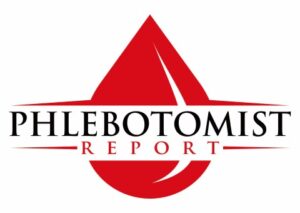For decades now, drawing blood from a vein, has been the main way of obtaining a blood sample to run clinical tests to determine one’s health or to monitor a health condition.
This method has been time tested, is proven to work, and most testing equipment have been designed to work with the venipuncture way.
Of course, many people dread needles and having a needle put in their vein, especially, if it has to be done multiple times over time, as is the case for certain health conditions that require constant monitoring.
For years now, many companies and institutions have been doing research and developing new technology for doing blood tests that doesn’t require a needle to be inserted into a vein. As a result, there are several technologies out there that make it easier to obtain a blood sample without using a hypodermic or vacutainer needle. However, in most cases these technologies are for lab tests that require small amounts of blood. For lab tests that require larger amounts of blood, venipuncture would have to be performed or at least, would be the best way to obtain larger amounts.
What Are these Other Alternatives of Doing a Blood Test?
There are several other ways of doing certain tests that don’t require venipuncture. Here’s a list of them:
1. Fingerstick
With fingerstick testing, a hypodermic or vacutainer needle is not inserted into your fingertip but a lancing device is used to give a small prick that is deep enough to cause blood to flow out of the fingertip.
Bear in mind that while it is not the same as doing a venipuncture, pain and bruising may occur when the lancet hits your finger.
Fingerstick is common with glucose meters and a few other technologies use it to do certain tests. I have personally used glucose meters for patients who wanted to check their sugar level. The procedure is quick and simple, and results are obtained fairly quickly.
There is a limit though, on these meters. If for example, a person’s sugar is very high, the meter may not read it. In a case like that, a venipuncture sample may have to be obtained to run the test on a more sophisticated equipment.
I experienced this, actually, more than once with some clients. After pricking their finger and placing the blood on the test strip, the glucometer was unable to give an accurate reading, so we had to perform a venipuncture and process the sample on a chemistry analyzer.
Some other technologies that use finger-prick size sampling include dried blood spotting (DBS), VAMS (Volumetric Absorption Micro sampling), dried plasma spot (DPS), and Haiim among others.
Dried blood spotting is simply a fingerstick sample placed on a specially treated card that, once dried, is put into a protective envelope and mailed to the lab without any special handling.
VAMS uses a micro sampling device that draws only a small, fixed amount of blood that can be mailed or carried to the lab for analysis without refrigeration or special handling.
Haiim is a tiny, portable blood collection device. It uses either the index, middle or ring finger to extract blood. First, the finger is chosen, sterilized, and then lanced by a medical professional. The lanced finger is placed on a disposable component of the Haiim. After the “start” button is pressed, the instrument uses gentle vacuum suction to extract between 150 to 500 microliters of blood.
2. Heel-sticks
Heel-sticks are another way of doing blood tests without having to insert a needle into a vein. They are more common among newborns, infants, and the elderly. They are primarily used when obtaining blood from a vein is impossible, like with newborns, who have very small veins or the elderly, whose veins are fragile.
The amount of blood collected is small and so heel-stick size samples are for tests which do not require large amounts of blood.
3. Saliva
Saliva is used to conduct certain tests but only a few. More research and development are being done to determine which tests should be done using saliva. Many proteins, for example, have been found in saliva, some of them the same found in blood, but testing for proteins using saliva (in place of blood) is not fully established yet.
Saliva would no doubt be a cheaper and easier way to collect a sample for a test but the medical world is not there yet.
4. Sweat
Technology is being developed to find various substances like hormones, nutrients, medications, and metabolites by using sweat. These technologies are in their developmental phase and are not out there as a way of doing tests in place of venipuncture. However, some day they may be an alternative for doing certain tests.
Conclusion
Venipuncture is by far the predominant method of getting a blood sample or of doing lab tests around the world. It is well established, time tested, and proven to give accurate and reliable results. It is not going away as yet or being replaced by other methods. In fact, it may never be replaced by another method in some cases because there are certain tests where obtaining blood by venipuncture is probably the only way.
Notwithstanding, other alternatives do make it easier and in some cases even cheaper, to obtain blood or do lab tests than venipuncture. Research is being done and new technology is being developed that will make the whole process easier, cheaper, and better for everyone as time goes by.
